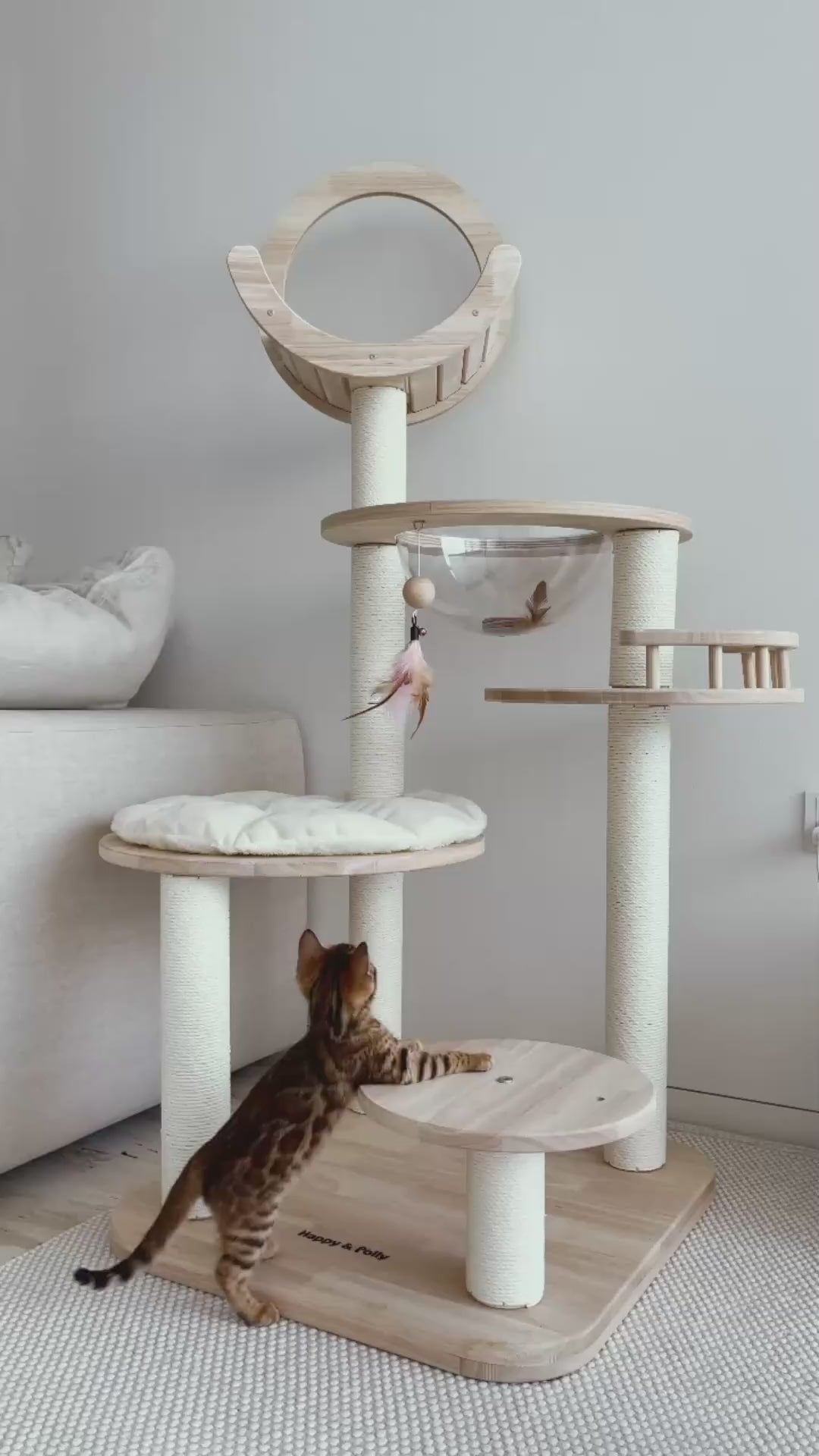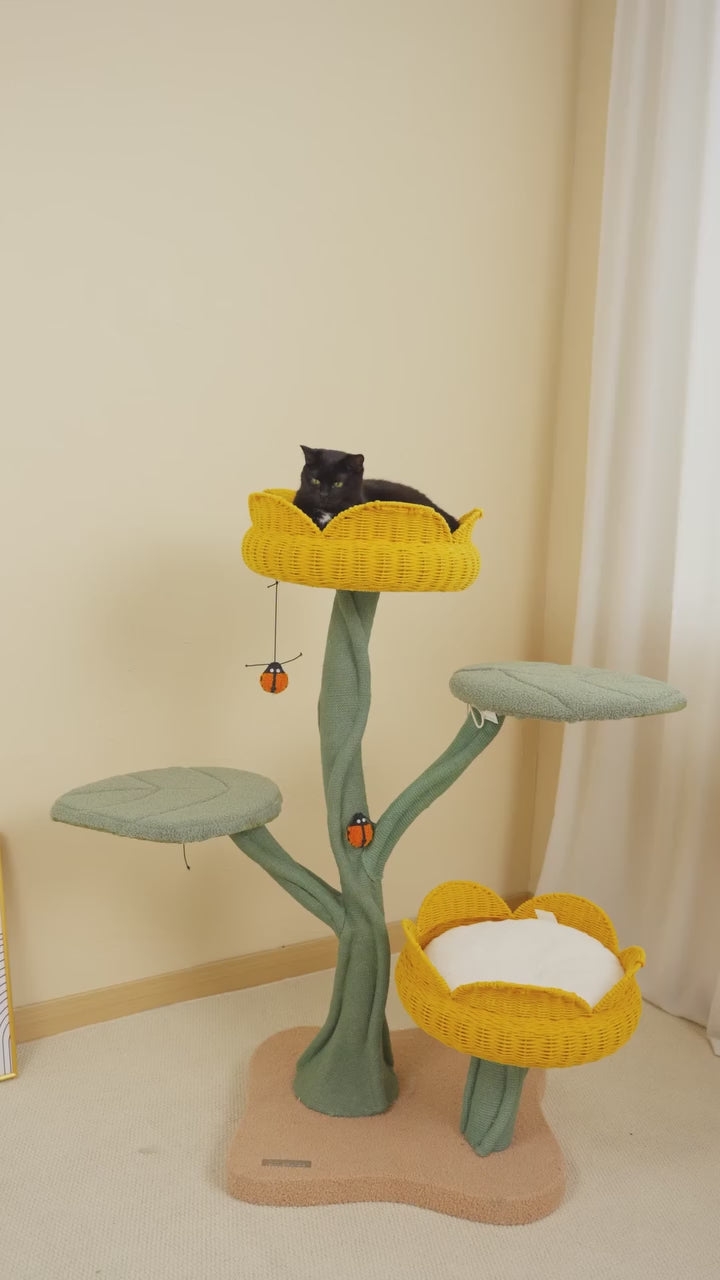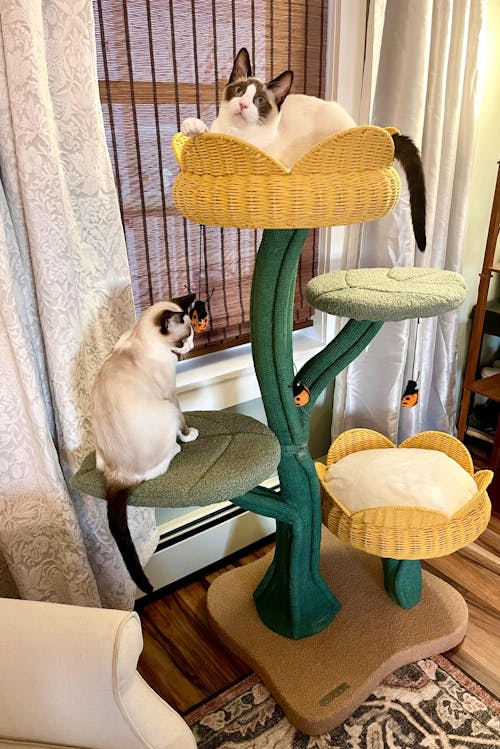Is Clay Litter Really Safe for Your Cat? Bentonite Clay vs. Tofu Cat Litter – Why Natural Is Better for Sensitive Paws
Introduction: Did you know your cat can suffer from “athlete’s foot”?
Cats have sensitive paws that need to be taken care of. Just as a person can get a rash from rough surfaces, a cat can become bothers by its litter material and develop irritation or infection. Clumping clay litter is a popular choice for cat owners, but many don’t know that it could make the cat feel uncomfortable and even unwell over the long term. Constant exposure to the fine dust and abrasive texture or bentonite clay can cause problems such as redness, peeling, or interdigital dermatitis.
Tofu cat litter provides a lighter, more natural alternative. It’s composed of mild matter that is plant based; it makes less dust. More and more cat owners are selecting tofu litter for being safe, tidy and convenient. Here, we’ll compare bentonite clay and tofu litter, consider health implications, and explain why making the switch to a natural alternative could benefit your cat.
What’s the Difference? Bentonite Clay vs. Tofu Cat Litter
Understanding Bentonite Clay Litter
Bentonite clay litter is a natural mineral that swells whenever it gets wet, producing tight clumps. This is simple to scoop and, to some extent, it traps odors. It’s a favorite in many households and has been for ages.
But bentonite clay isn’t the perfect substance it’s made out to be. It is back-breaking and very dusty. Your cat stirs up fine particles from the box when digging, dispersing them into the air as well as onto nearby surfaces, which may cause irritation of the lungs and paws in your cat. When clay litter becomes soiled, it’s bagged and discarded, as it is neither flushable nor biodegradable. It contributes to landfill waste, and it is not environmentally friendly.
What Makes Tofu Cat Litter Different?
Tofu litter is a more recent alternative, consisting of simpler plant components. It is feather light, and it clumps gently when wet. This does make scooping and box cleaning easier. The litter is super low-dust, which means less dust on your cat and around your house. It's also flushable, so disposal is a little easier and better for the environment.
Tofu litter is particularly useful for cats that may have sensitive paws or difficulty breathing. It’s an environmentally friendly option that is as good for your pet as it isfor the planet.
Health Matters: The Secret Risks of Clay Kitty Litter
Clay Can Leave You Sore and Irritated
Firmly clumping cat litter, such as clay litte,r can be fine and stick to your cat’s paws. These particles can dry out the paw pads and eventually lead to small cuts or peeling. Clay will trap wetness in wet or moist conditions. This provides an environment where bacteria can breed. The bacteria can seep into cuts between the toes, particularly if a cat steps into a damp litter box. This can cause inflammation or infections, particularly if the litter isn't changed frequently.
Some cats are more sensitive to the smell than others. Long-haired breeds can have clay stuck between their toes or in their coat. If they groom themselves after using the box, there’s a chance that they will accidentally ingest some of the clay, which could cause an upset stomach.
Tofu Litter- Safer for Your Kitty
Tofu litter consists of soft, dry material that is easy on a cat’s paws. It is not made with chemicals or harsh clumping agents. It creates lumps that are lightweight and do not break apart easily, a feature that helps keep the box cleaner and drier. A dirty litter box is likely the first place he’ll find bacteria still lingering around, so if you have a clean one, both you and your cat can avoid water infections.
There is also a gentler option for cats recovering from surgery or those with a skin condition. It may help minimize the irritation and create a clean and comfortable environment.
Product Spotlight: Happy&Polly Clumping Organic Tofu Cat Litter – Clumping is great and dryness as well; It is gentle to your cute cats’ paws and absolutely no tracking.
Which Is Easier to Clean? A Practical Comparison
Cleaning with Clay Litter
Clay litter is sometimes tricky to deal with. When it gets wet, it’s hunky, and it emerges as dried clumps that are hard to remove from the edges and bottom of the box. It also leaves behind a dust film on the inside of the box and the surrounding area. The box must be cleaned often, while the litter will need to be bagged and tossed.
Cleaning with Tofu Litter
Soft clumping tofu litter that is easy on your cat\'s paws makes cleaning a simple task. The clumps do not fall apart while scooping, which prevents litter box mud pie. Since the litter flushes away, you can easily dispose of it without any additional hassles. Tofu litter also offers less to clean up in the box, so you can go longer between full makeovers.
Quick Comparison:
● Dust: High with clay; low with tofu.
● Weight: Clay is heavy; tofu is light.
● Flushable: Clay is not; tofu is.
● Odor Control: Tofu offers better natural odor control.
● Ease of Use: Tofu litter is quicker to scoop and leaves less mess.
Product Spotlight: Happy&Polly Coffee Grounds Tofu Cat Litter – Combines natural coffee grounds for improved odor control and daily freshness.
Eco-Friendliness: Why Tofu Litter Is the Greener Choice
Clay Litter and Environmental Damage
Bentonite clay is strip mined. This practice tears away enormous portions of land and ecosystems. It relies on energy-intensive machinery and has a lasting impact on the environment. Clay litter is a one-time use product and does not recycle or biodegrade. It winds up in landfills and contributes to growing waste problems.
Tofu Litter Helps the Planet
Tofu litter is created from leftovers of the food production. This gives it a second life and keeps it out of landfills. It doesn’t pollute the earth, because it can decompose naturally. It can be composted, flushed in small quantities, reducing dependence on plastic trash bags. It provides a safer, cleaner option for those looking to minimize their impact.
Which Cats Should Use Tofu Cat Litter?
Kittens
Young cats' skin is still developing and it's relatively thin and tender. Scratchy or dusty litter can be uncomfortable. Tofu litter is soft and clean, these litter is safe for small paws. It also flakes very little, so the kittens are less likely to breathe in dangerous particles.
Senior Cats
Older cats can have joint issues or have weaker muscles. They may have difficulty maneuvering in heavy or lumpy litter. Tofu litter is a quickpick favorite through and through, and it makes it easy for seniors to use the box without worry or pain.
Post-Surgery Cats
Many cats that are post-op will have wounds or shaved patches. Clay litter can become trapped in these areas and lead to infection. Tofu litter (used in your kitty litter pan) keeps the area cleaner and offers a soft surface that won’t scratch or disturb healing skin.
Cats who have Allergies or Breathing Issues
Other cats are sensitive to dust and strong smells. Even clay litter can cause sneezing, coughing, or eye irritation. Tofu litter is low dust with no strong scents, plus is good for sensitive cats.
Multi-Cat Homes
If you have multiple cats you'll want a litter that controls odor and is easy to maintain. Tofu litter clumps solidly and has low odour. It aids in fast clumping, so the box stays clean for longer periods of time (even if youre too busy to clean up every day).
Conclusion: Healthy Paws, Happy Cats
Clay litter is very popular, but it comes with health risks and environmental problems. It's coarse, dusty and it's hard to handle. While the product may be perfectly effective for your average cat, it can actually hurt more than it helps those that may have sensitive paws, special needs, or allergies.
Tofu cat litter is the safe, clean option. It shields your cat’s paws, keeps your house dust-free and reduces waste. Not only is it easier to use, it’s more eco-friendly. By making this change, you help ensure that your cat stays healthy and your home stays clean.
Give your cat the best seat in the house with the Breeze Litter System. Choose comfort, safety, and simplicity. May their next step be light and carefree.
 BFCM Countdown Deals
BFCM Countdown Deals

 As Seen On
As Seen On

 Our Blog
Our Blog
























































































 SHARE
SHARE TWEET
TWEET PIN
PIN














